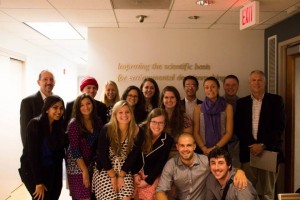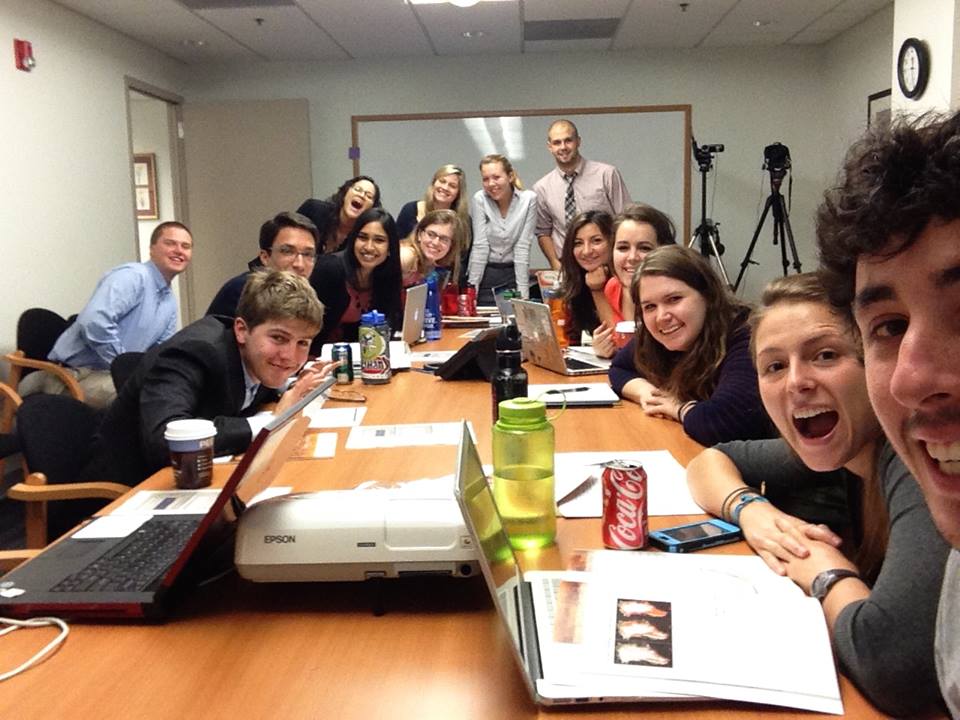Last week the members of Dickinson’s Climate Change Mosaic was lucky enough to engage in valuable discussions with a wide range of climate change related actors, including: Tom Lovejoy, Bill Breed, John Holdren, Jacob Scherr, Mike MacCraken, Mike MacCracken, Dallas Butraw and many other highly regarded individuals. Although these private, public and governmental actors had careers focused in differentiated climate-related fields, their talks involved a common expected theme. This theme was the how to approach future issues surrounding with climate change and it’s governance.

In which, Lovejoy’s solution was to restore vegetation, allowing for carbon sequestration through natural processes. Lovejoy explained that if restoration is implemented at a large scale, global temperatures could decrease by 0.6 degrees. One of his recommended mechanism was for everyone to plant a tree, allowing for carbon sequestration. Whereas Daniel Reifsnyder’s solutions consisted of closing the divide between developed and developing countries in the Paris’s agreement by requiring global participation with the right commitments. Jacob Sherr highlighted the importance of addressing the climate change crisis with “new architecture”. The “new architecture” consisted of having a mixed-track approach towards climate change governance due the need to engage multiple players around the globe. MacCraken focused on the benefits from completely cutting out long-term greenhouse gases, such as methane and black carbon. These gases stay in the atmosphere longer than CO2 and IPCC currently does not deal with the effects from black carbon. Keya Chatterjee encouraged the switch to solar energy for it was cheaper than diesel (in some areas of the world). She also discussed the need to engage the public through music and other sources of media to create global involvement. Overall, each speaker had influential ideas and thoughts on the varying issues surrounding climate change. It was evident that in order to approach climate change, actors from various fields need to come together to tackle the differentiating issues.


With 60+ BILLION food animals on the planet our best chance to mitigate climate change is to severely reduce consumption of animal foods. More than 1/3 of human induced warming is attributable to animal agriculture. Methane is 24 times more potent than CO2 but takes only 7 years to cycle out of the atmosphere. CO2 takes around 100 years to come out. Human pursuit of animal protein is the leading cause of methane release and a primary cause of CO2 concentrating in the atmosphere. Check the facts and act!
“As environmental science has advanced, it has become apparent that the human appetite for animal flesh is a driving force behind virtually every major category of environmental damage now threatening the human future: deforestation, erosion, fresh water scarcity, air and water pollution, climate change, biodiversity loss, social injustice, the destabilization of communities, and the spread of disease.” Worldwatch Institute, “Is Meat Sustainable?”
“If every American skipped one meal of chicken per week and substituted vegetables and grains… the carbon dioxide savings would be the same as taking more than half a million cars off of U.S. roads.” Environmental Defense Fund
“A 1% reduction in world-wide meat intake has the same benefit as a three trillion-dollar investment in solar energy.” ~ Chris Mentzel, CEO of Clean Energy
There is one single industry destroying the planet more than any other. But no one wants to talk about it… http://cowspiracy.com
Step by Step Guide: How to Transition to a Vegan Diet http://www.onegreenplanet.org/vegan-food/step-by-step-guide-how-to-transition-to-vegan-diet/